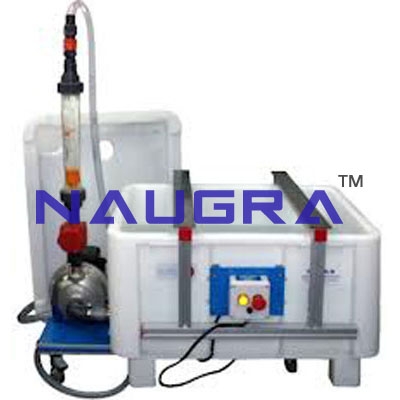- Civil Lab Mechanical Lab Engineering Lab Equipments
- sales@didacticlabequipments.com

CAT NO: DIDACTICNLE-Export-205068
EXERCISES AND PRACTICAL POSSIBILITIES
Some Practical Possibilities of the Unit:
1.- Head losses in a PVC pipe.
2.- Head losses in an aluminium pipe.
3.- Head losses in a methacrylate pipe.
4.- Study of head losses in pipes of the same material.
5.- Study of head losses in function of the material.
6.- Friction coefficient in a PVC pipe.
7.- Friction coefficient in an aluminium pipe.
8.- Friction coefficient in a methacrylate pipe.
9.- Study of the friction coefficient in function of the material.
10.- Study of the friction coefficient in function of the diameter.
11.- Parallel network configuration for pipes of same material and different diameter.
12.- Parallel network configuration for pipes of different material and same diameter.
13.- Series network configuration for pipes of different material and different diameter.
14.- Series network configuration for pipes of different material and same diameter.
15.- Characteristics of a circular circuit.
16.- Double piping circuit.
Other possible practices:
17.- Sensors calibration.
Practices to be done by PLC Module (PLC-PI)+PLC Control Software:
18.- Control of the AMTC unit process through the control interface box without the computer.
19.- Visualization of all the sensors values used in the AMTC unit process.
20.- Calibration of all sensors included in the AMTC unit process.
21.- Hand on of all the actuators involved in the AMTC unit process.
22.-
Realization of different experiments, in automatic way, without having
in front the unit. (This experiment can be decided previously).
23.-
Simulation of outside actions, in the cases do not exist hardware
elements. (Example: test of complementary tanks, complementary
industrial environment to the process to be studied, etc).
24.- PLC hardware general use and manipulation.
25.- PLC process application for AMTC unit.
26.- PLC structure.
27.- PLC inputs and outputs configuration.
28.- PLC configuration possibilities.
29.- PLC program languages.
30.- PLC different programming standard languages.
31.- New configuration and development of new process.
32.- Hand on an established process.
33.- To visualize and see the results and to make comparisons with the AMTC unit process.
34.- Possibility of creating new process in relation with the AMTC unit.
35.- PLC Programming Exercises.
36.- Own PLC applications in accordance with teacher and student requirements. Fluid Mechanics Lab Equipments manufacturers.
